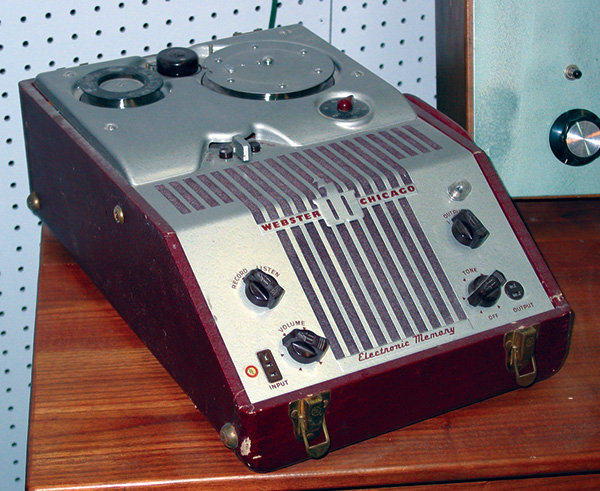Recording a message on a wire spool and mailing it off to family and friends became a growing fad called “wirespondence.” Webster-Chicago, a company that produced audio equipment including wire recorders, created the Wirespondence Club in 1950. This effort was spearheaded by John Schirmer, an employee of Webster, who saw the power of corresponding by audio recordings. In 1948, the Soviet Union blockaded West Berlin where Schirmer’s mother lived. During the massive US and British airlift supply campaign, one of the pilots ordered a wire recorder from Webster. Schirmer, being in the export department, recorded a 15 minute message for his mother and shipped the spool along with the recorder. Thanks to the pilots, a flow of recordings to and from blockaded Berlin began.
In the first three months of the formation of the Wirespondence Club, membership had reached 830, with members representing 20 countries besides the United States. By late 1952, the Club had grown to over 1,900 members from 35 countries and all 48 states (Alaska and Hawaii had not yet achieved statehood). Members came from all walks of life, including scientists, ministers, farmers, artists, and bankers. Topics of interest were wide-ranging, involving politics, language, music, and descriptions of the scenery in the sender’s local area.
At least two marriages are reported as having originated from wirespondence (just as has resulted from Internet chat sessions today). Municipal and religious leaders of Springfield, MA, sent a spool of friendly greetings to the townspeople of Shiremoor, Northumberland, England, as an expression of fellowship to members of our World War II ally. A wirespondent told a United Nations World Magazine reporter, “You learn to understand and like people of different background. Your horizons extend and you lose the idea that your country and your way of living is the only one.” (Read more)
Item on display in the Archives
Webster-Chicago Model 80 magnetic wire recorder, 1947



